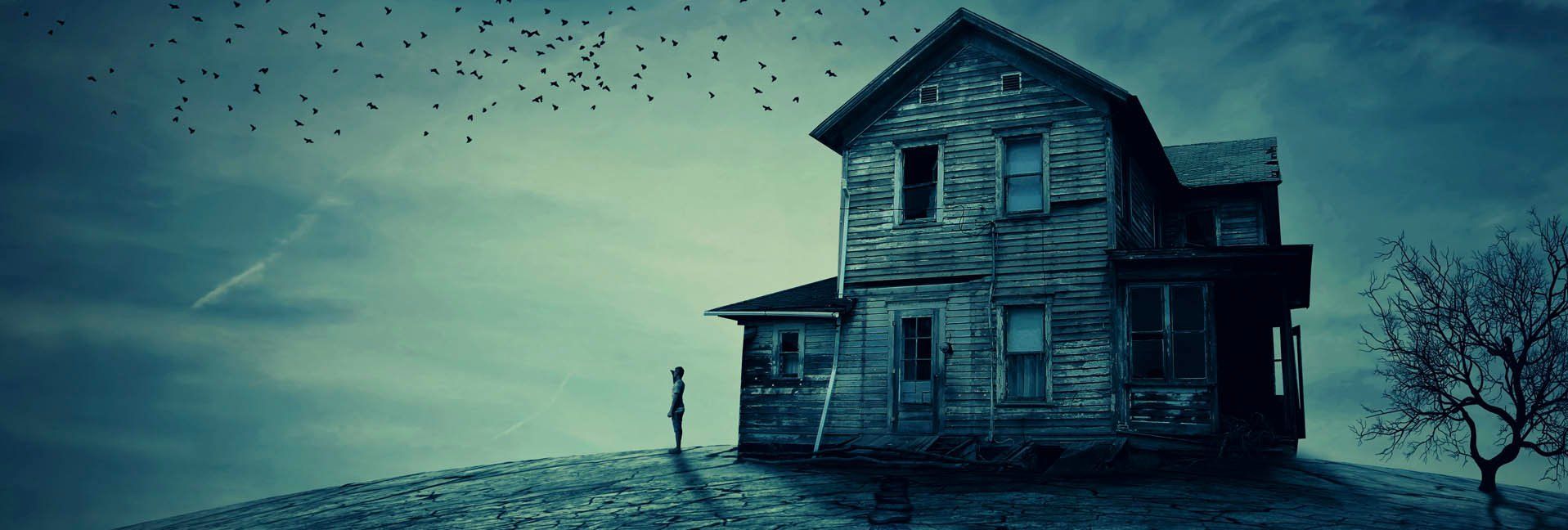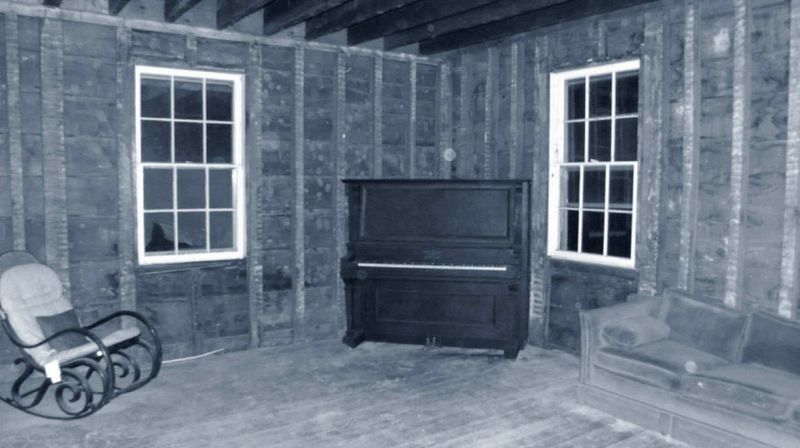Haunted Country


Get your Halloween goosebumps at these eerie haunts
Remember when you were a kid, staying up all night with friends telling scary stories to each other? The mysterious figure glimpsed in a cemetery, moans and cries of sorrow from an abandoned farmhouse, objects that move on their own—all these make up the legends and lore of our rural communities.
Haunted houses and their ghost stories may even have origins near you today. We take a look at a few that creeped us out. See if your courage is greater than ours!
Morse Mill Hotel Morse Mill, Mo.

Some mighty strange things are going on here, unexplainable things. Located in a forgotten country hamlet 35 miles outside of St. Louis, Miss., this building has been a private residence and a hotel through its nearly 200-year existence. Over time, though, the building was allowed to deteriorate.
Contractor Patrick Sheehan bought the structure in 2007 with the vision of turning it into a B&B. That’s when his workers began noticing strange happenings, even when alone: hand tools mysteriously going missing, footsteps and voices heard on upper floors, and carpenters focused on a task who suddenly feel a hand on their shoulders, only to turn and find no one there.
I’ve been touched, I’ve had my shirt pulled on, heard voices, and even captured voices on my digital recorder.”
– Dawn Koenen, tour guide at Morse Mill Hotel
“The paranormal activity here, oh my God, it is unbelievable,” gushes Dawn Koenen, who has been giving tours for nearly two years at the hotel for the owner. “It’s crazy. We have everything—and I mean everything. It’s an amazing place.”
This activity ranges from ghostly vapors spontaneously appearing—then vanishing—to actual physical contact.
Never disrespect a ghost
Because the building’s electricity is limited to an outlet at the basement fuse box, Dawn and fellow tour guide Meribeth Broadway use flashlights to guide visitors in darker recesses. Spirits have no difficulty manipulating these flashlights, apparently, and are said to turn them on and off to communicate.
Once, a flashlight was set down with the tour guides hoping for a contact in the form of some supernatural Q-and-A. What they got was disturbing, at least for one cheeky 19-year-old in the group.
Dawn’s son, who was also on the tour, began asking questions. Dawn tells us more: “He asked, ‘Are you a female?’ and the flashlight didn’t come on. ‘Are you male?’ and the flashlight comes on. ‘Okay, can you turn it off?’ and the flashlight goes off. Then his next question was ‘Do you have a son?’ and the flashlight came on.”
The cheeky teenager in the group, Alec—his first time on a ghost tour—muttered under his breath, “I’ll beat his ass.”
“When Alec said that, the flashlight turned off and then Alec said, ‘My neck is burning!’ We shined the flashlight on him and he had a scratch three and a half inches long that welted.”
Dawn reports that kid was followed the rest of the night and received three more scratches on his body.

Who and why is a mystery
John H. Morse, for whom Morse Mill is named, bought the house in 1851 and over the years established the village’s post office, built the mill on nearby Big River, operated a dairy, and a store among other enterprises.
Outwardly successful, he added on to the home in the style of the time, completing the structure we see now. Poring over census records, Dawn learned that Morse’s home not only housed his family, but many boarders over the years. After his death in 1891, the house was sold at a courthouse auction.
The Williams family acquired the place and began operating the three-story, rambling house as a 17-room hotel. One of the supposed employees was Bertha Gifford, a local woman known as a compassionate caregiver and excellent cook.
“Kindly” Bertha was later accused of using arsenic to murder 17 people in Catawissa, Mo., her spree beginning in the early 1900s. Her 1928 trial was a sensation, and she was declared not guilty by reason of insanity. Institutionalized, Bertha died in a state mental hospital in 1951 and was buried in an unmarked grave in Morse Mill.
Could Bertha be the force behind these hauntings? “Why or who—we don’t know,” Dawn says.
Guests check in, but they don’t check out
The hotel possibly hosts as many as 11 different entities, by the count of both Dawn and other paranormal researchers who have visited. Various ghostly men, women, and children have engaged workers and visitors over the years.
“We have a spirit on the first floor in room number four,” Dawn says. “We call her Vi. That’s what she responds to. The story behind her is that she was a prostitute who lived there and that she was murdered there.” Dawn has yet to research local newspapers for verification.
Some of the apparitions are more respectable—one contractor staunchly affirms he saw a man in a top hat on the second floor, at the end of the hall.
Visitors can even occasionally get a two-knock response to “shave-and-a-haircut” from elsewhere in the house.
Thrill of the hunt
Visit the Morse Mill Hotel and Dawn or co-guide Meribeth will take you on what they call a “tour-slash-hunt.” The hotel offers guided two-hour tours for two guests, all the way up to parties of eight or an extended six-hour investigation.
The guides will have you tromp from the attic to the basement and through all the framing for rooms—it is still a construction site. You can sit quietly anywhere you like to wait for a contact. Sometimes the magic happens, and sometimes not—such is the nature of ghost hunting.
“It’s all spooky, unexplainable stuff,” Dawn says.
For more information, visit the Morse Mill Haunted Hotel Facebook page or morsemillhotel.com.
Stepp Cemetery Benton, Ind.
Tucked away between Indianapolis and Bloomington, Stepp Cemetery is lonely collection of nearly-forgotten grave markers—and spooky legends, too.
In the early 20th Century, a religious group, the Crabbites, is thought to have used the remote cemetery for bizarre, cult-like ceremonies. Snake-handling demonstrations, animal sacrifices, and possibly group sexual encounters were reportedly held in this location. News accounts say Crabbites claimed they could cast out evil spirits—perhaps some stayed at the cemetery.
One story deals with a mother who was so distraught over her young daughter’s death that she dug up the child’s body and cradled it for hours before taking her own life. An apparition of the mother, dressed in black, is sometimes seen crying on the grave, or near where an old tree stump used to be.
If you visit, leave a coin on a small grave marked “Baby Lester” to ensure good feelings while there. You may also experience phantom fogs and glowing orbs that have been reported here.
The cemetery is located in the Morgan-Monroe State Forest, off Forest Road. A gate bars entrance to vehicles, but a path offers on-foot accessibility.
’Witch Road’ Ripon, Wis.
Actually named Callan Road, this byway winds through the woods between Rosendale and Ripon, past the ruins of an old house. According to local legend, this was a witch’s house, and the ghost of a young girl has been seen in the area (fleeing the witch, no doubt). People who drive the road report seeing a tree that “looks exactly like a witch,” feeling nauseated, and may experience car trouble near an old barn. Drive carefully.
Cave-In-Rock Cave-In-Rock, Ill.
River pirates, horse thieves, and highwaymen were drawn to the Ohio River in the late 1700s, One of the worst was Samuel Mason.
A known desperado with a hideout at Cave-In-Rock overlooking the Ohio River, a “dead or alive” reward was issued for him. This proved too tempting for two members of his gang. In July 1803, they killed Mason and brought his head to territorial offices for proof and to collect their reward. The pair was soon identified as members of Mason’s gang, and were arrested and hanged.
Did these evil spirits return to their lair after death? Travelers passing on the river claim to hear moans and cries echoing from the cave. The unusual rock formation is now part of Cave-In-Rock State Park, and is open to the public.
Terror Bridge Webster County, Iowa
Ghost hunter and author Michael Kleen picked Terror Bridge in Webster County, Iowa as the creepiest bridge in the midwest, and deservedly so. Not only is it supposedly haunted by the ghost of a woman who threw three of her four children off the bridge in the path of an oncoming train, but a strange hairy creature has been spotted in the nearby woods as well.
Although the bridge has been rebuilt over the years, people still report unusual feelings and occurrences: emotional unease, car windows suddenly fogging over, seeing a nearby windmill turn unexpectedly on calm days, and presence of an ominous old truck beneath the bridge.
Terror Bridge—actually Bannwell Bridge—is located nine miles west of Fort Dodge. If you visit, follow local custom with doors locked and windows up while crossing, or you might fall victim to evil spirits.
Devil’s Gulch and Split Rock Park Garretson, S.D.
At the north end of Garretson along the James River, Devil’s Gulch is what lore is made of: Good stories. The outlaw Jesse James, pursued by a posse following a murderous robbery attempt in Northfield, Minn., fled to the river, and somehow spurred his horse to leap the 20-foot-wide chasm. His pursuers, fearing their own horses would not make the jump, abandoned chase. A new iron footbridge makes crossing much easier today.
On certain days, one can hear moaning and eerie sounds from the high palisades. Legend says an abducted young woman was killed by her lover as he tried to rescue her. Both the ringleader and the rescuer were mortally wounded in the gunfight, but he returned the woman’s body, where he died. The moaning wind is thought to be spiritual testament to this tragedy.
Hocking Hills Caves Hocking Hills, Ohio
There are many ghost stories told of the Hocking Hills area: Old Man’s Cave, Conkle’s Hollow, and Ash Cave all have apparitions, but the lesser-known Saltpeter Cave will creep you out.
In Ohio you are never more than 20 miles from a haunted place. In most cases, it’s hard to be more than 10 miles away.”
– Dan Schneider, paranormal researcher and author
Mined during the War of 1812 for saltpeter for gunpowder, captive Native American workers were killed in a cave-in. Investigator Dan Schneider reports, “We were the only ones around and we could hear tapping on the rocks like they were scraping the saltpeter from the walls. We also would hear things moving when nothing was actually seen moving.”
Tags:Seasonal Living

Acreage Life is part of the Catalyst Communications Network publication family.
















